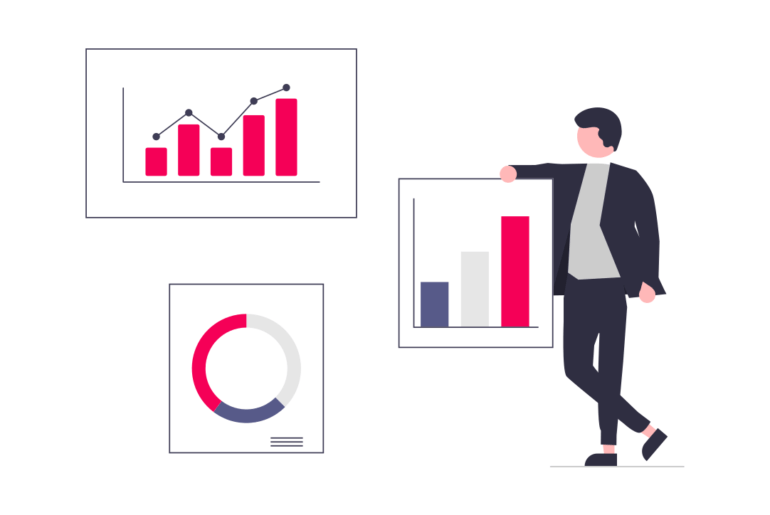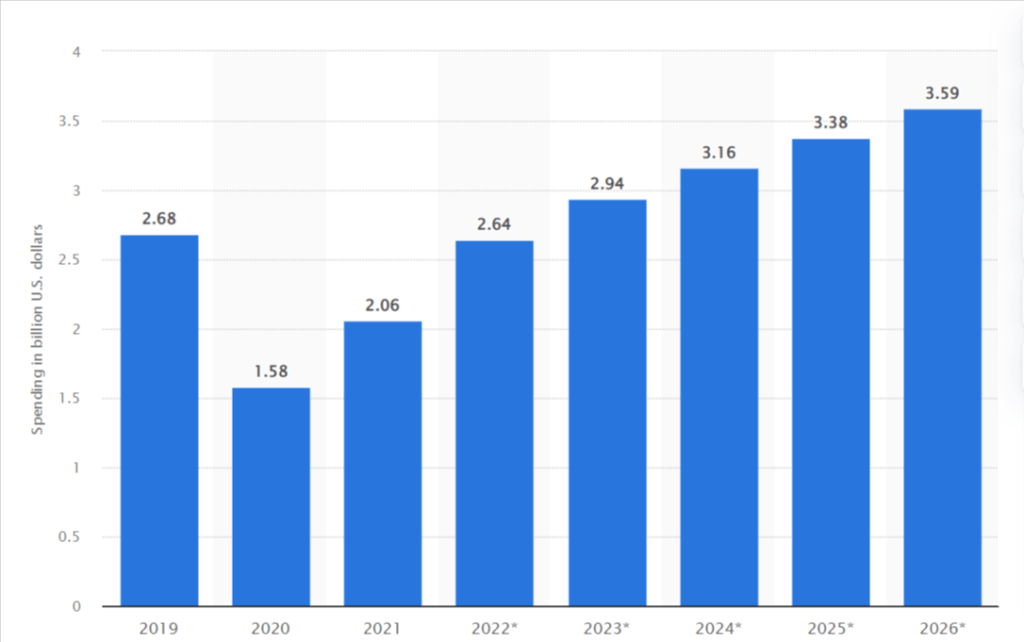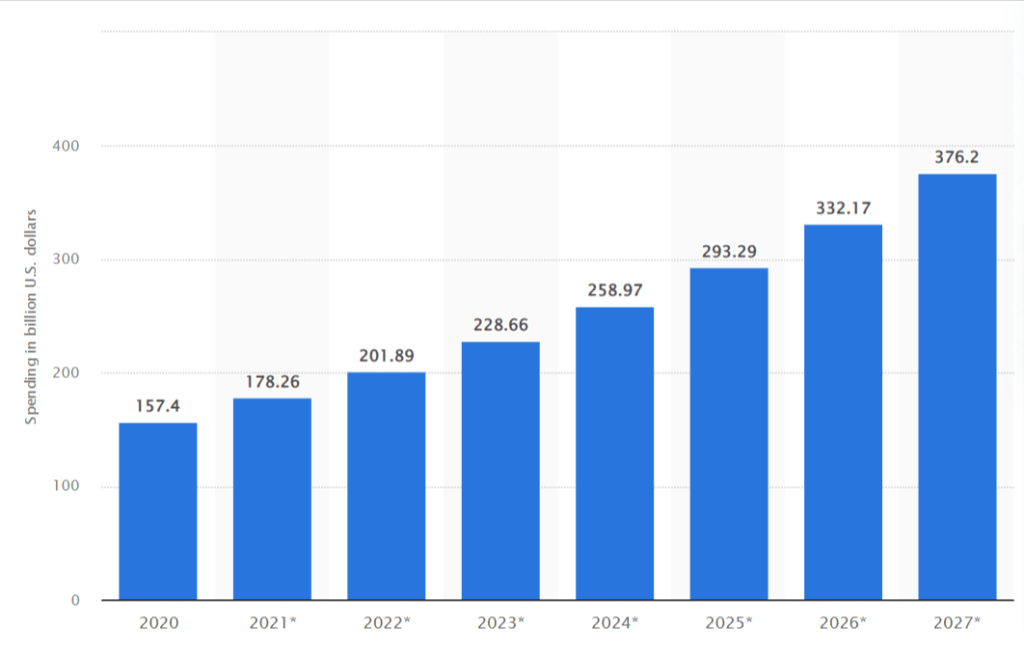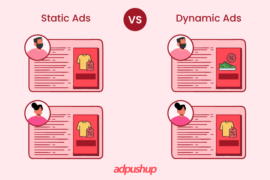Stay ahead of the game with the latest programmatic advertising trends for publishers in 2023. Discover the impact of third-party cookies apocalypse, mobile dominance, data monitoring tools, and more.
In the ever-changing world of advertising technology, programmatic advertising has emerged as a key player. Ever since it was introduced, it has been taking the advertising industry ahead by leaps and bounds. Its automating capabilities have streamlined ad inventory’s buying and selling process, making everything more efficient than ever.
As we have now reached halfway through 2023, several things have changed, and there are multiple programmatic advertising trends that publishers should keep a close eye on to have that competitive edge. From AI and ML for programmatic efficiencies to various manual tactics and methodologies, there is a lot to keep up with this year.
This blog post explores programmatic advertising trends in detail and provides insights and strategies for publishers to stay ahead of the game and achieve success in the world of digital advertising.
First, let’s take a look at the numbers and stats for Programmatic Advertising:
1. According to Statista, programmatic advertising spending in the United States is expected to surpass 200 billion dollars by 2023.
2. Programmatic digital display ad spending grew by 39.3% in 2021 but slowed to 11.0% in 2022. It is expected to grow by 16.9% in 2023. (Source: Insider Intelligence)
3. Connected TV (CTV) is set to be the significant growth area for programmatic advertising this year. (Source: iab Europe)
4. It is also projected that programmatic digital display advertising spending will comprise 91.1% of all digital display ad spending in 2023. – (Source: Insider Intelligence)
Now without further ado, let’s delve into trends in programmatic advertising.
Also Read – Programmatic Advertising: A Definitive Guide For Publishers
Programmatic Advertising Trends to Watch in 2023
Trend #1: Exploring Alternatives to Third-Party Cookies
Cookies are being pushed away because of privacy concerns; thus, finding alternatives for the third party is a pressing concern for the publishers. Still, you will be surprised to know that as per Adobe’s research , 74% of marketers still relied on third-party cookies.
On the other hand, a recent survey found that 41% of marketers believe that losing third-party cookies will be one of their biggest challenges.
So, marketers should find alternative ways to third-party cookies to save themselves from potential disruptions to their advertising campaigns.
Trend #2: Rise of DOOH (Digital out of Home)
Now that the pandemic is over, offline shopping has picked up, and more and more people are stepping out and buying from brick-and-mortar stores. This programmatic advertising trend is free from cookie restrictions and has been thriving lately.
Therefore, marketers should also put their focus on billboard ads.
Not only that, but things have changed a lot. The experiences for people in offline advertising are significantly improved. It includes 3D board ads, interactive display ads, and more. People get to see these ads whether traveling by bus, commuting to work, or hopping in a general store to buy groceries.
According to Statista, digital out-of-home (DOOH) advertising spending in the United States is set to increase by approximately 11.4 percent in 2023, reaching around $2.94 billion. As more digital screens for ads continue to emerge across the country, programmatic strategy is well-positioned to secure a larger portion of this spending in the coming years.
Also Read – Top 7 Programmatic Advertising Platforms of 2023
Programmatic DOOH advertising offers several benefits, such as broad reach, immunity to ad blockers, and unobtrusive placements. As a newcomer to the advertising scene, it is expected to benefit from the cookie-free future due to its unique audience targeting methods and potential for contextual marketing to take the lead.
By utilizing programmatic DOOH, brands have the opportunity to create visually stunning and memorable experiences that will make a lasting impression on their target audience.
Trend #3: Use of AI and ML for Building Programmatic Efficiencies
Another trend in the advertising industry of the programmatic world is the use of AI and ML. Artificial intelligence and machine learning are also paving the way for programmatic advertising. These technologies can tremendously benefit both publishers and advertisers.
AI enables publishers to gain audience insights, enhance user engagement through personalized content recommendations, and automate content creation and optimization, resulting in improved understanding, increased engagement, and scalable personalization.
On the other hand, for advertisers, AI and ML can analyze large amounts of data in a matter of minutes. It makes campaign targeting more effective than ever. And it does not just stop there. AI and ML also allow for automated ad campaigns by figuring out what works best.
Trend #4: The Rapid Surge of OTT, CTV, and In-Play Ads
The growth of OTT, CTV, and In-play ads can’t go unnoticed. In fact, according to Statista, connected TV (CTV) users in the United States indicate that there were 56.8 million users among millennials. This number is expected to grow to 62.6 million by 2025, highlighting the increasing importance of CTV as a platform for reaching audiences effectively and efficiently.
OTT platforms are also picking up pace; therefore, more and more advertisers are monetizing this opportunity. With these numbers only expected to grow, advertisers are turning to these platforms and ad formats to reach their target audiences. Advertisers are taking advantage of these platforms, offering more targeted, interactive, and engaging ads that are less likely to be skipped or ignored.
Also Read – OTT vs CTV: Differences Explained For Publishers
Trend #5: Contextual Ads to Reach Premium Target Audiences
Contextual advertising has long been here, and it is expected to play a more crucial role in the future, given that cookies will be phased out.
As the name suggests, contextual advertising implies running ads relevant to publishers’ content, and these ads are only set to grow. A study by Statista revealed that the global expenditure on contextual advertising reached a whopping 178.3 billion U.S. dollars in 2021. And it’s projected that this figure will more than double by the year 2027.
It makes contextual advertising far better than other methods that fail to deliver relevant ads. It’s a safe assumption that the audience viewing your ads will be more intrigued by them due to the context of the webpage they are on. Thus, publishers and advertisers will focus more on serving contextual or relevant ads to the users.
Trend #6:The Booming Expansion of Video Ads
Video ads are expected to grow exponentially. As per Statista, by the end of 2023, ad spending in video advertising is expected to reach US$176.60bn.
Moreover, a survey by Hubspot discovered that 91% of professional marketers already use video ads as a marketing tool. With video advertising growing quickly, it’s safe to say that automated video ad buying has become the norm for distributing digital video commercials, making it another advertising trend in 2023.
In addition, programmatic video is becoming more premium, with better quality inventory and more transparent measurement. Premium programmatic video is a win-win for publishers and advertisers, with publishers receiving higher CPMs for their inventory and advertisers getting access to high-quality video content.
Overall, video advertising is a rapidly growing trend in programmatic advertising, with programmatic video leading the charge toward a more innovative, targeted, and engaging advertising landscape.
Also Read – 10 Tips To Increase Programmatic Video Ad Revenue
Trend #7: Programmatic Goes Secure
Privacy and security concerns with regard to Programmatic Advertising have long been around. From a Brand Safe environment to Viewable inventory and more, the concerns about quality, security and privacy of Programmatic Advertising are here to stay as long as publishers and brands will adapt.
However, there is hope. In 2015, with the Programmatic Advertising landscape scaling up with a rate of 137 percent in the U.S. alone, standardized security protocols, privacy filters, and solid assurance of better targeting as well as genuine impressions will emerge. The standardization of fraud and view-ability contingencies will ensure proper solutions to these concerns.
These trends are informed speculations and may or may not emerge verbatim. But one thing is for sure. Programmatic Advertising is, if not the future, then definitely a major part of it. With traditional advertising and Programmatic Advertising coming together, publishers and brands are all set to inevitably find themselves empowered with a lot more consumer reach and it will be up to them to leverage this power to tip the game.
Display advertising will not go away any time soon and with different forms of Programmatic Advertising, be it Real Time Bidding, Open Auctions, Invitation Only Auctions, and more, it will become a major tool for publishers to create a knowledge base for the consumers to provide intelligent advertising.
Attribution: Statistics courtesy: www.cmo.com & www.adweek.com
You may also like to know – Ad Tech Innovations and Challenges
Programmatic Advertising Trends: Mobile Ads Is the Future
According to Oberlo, mobile users are projected to reach 6.8 billion by 2023, which means programmatic mobile advertising will surpass desktops by a major haul.
From this, one thing is clear: programmatic mobile device advertising will increase. Therefore, the emergence of data monitoring and measurement tools on mobile devices will cause a stir in the programmatic mobile video space.
These tools will enable advertisers to gain deeper insights into user behavior, preferences, and engagement patterns on mobile platforms. By leveraging such data-driven insights, advertisers will be able to optimize their programmatic mobile video campaigns, ensuring better targeting, increased relevance, and improved overall performance.
FAQs – Programmatic Advertising Trends
Programmatic advertising is the automated buying and selling of ad inventory through a software platform. This technology allows advertisers to target specific audiences and optimize their real-time ad placements.
Programmatic advertising is revolutionizing the way that brands and publishers approach digital advertising. With its ability to target specific audiences, measure campaign effectiveness in real-time, and automate the buying and selling process, programmatic advertising is becoming an increasingly popular option for advertisers looking to connect with consumers in more impactful ways.
Some of the most prominent emerging trends in programmatic advertising include the increased use of artificial intelligence and machine learning, the adoption of programmatic advertising on mobile devices, the rise of connected TV as a key channel, and the development of new privacy-focused solutions in the wake of the decline of third-party cookies.

Deepak has a keen eye for detail and a deep understanding of the ad tech landscape. Whether it’s through in-depth articles, thought-provoking insights, or compelling storytelling, he’s dedicated to helping people navigate the complex world of ad tech with the simplicity of his words.





![CTV vs OTT Advertising: Which one is Right Pick for Publishers? + [6 Bonus Strategies] Ott vs Ctv](png/featured-image-270x180.png)



